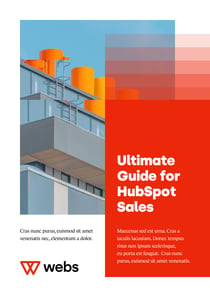Your customer has changed. They’ve evolved with the world around them. It’s not just about your innovative product or service any more, or even that great referral they got from a friend. Now, 80% of your customers consider the experience a company provides just as important as its products or services.
Not only are your customers more demanding of consistency and quality in your service, but they also have access to more information quicker than ever before. This means that you’re speaking to a very knowledgeable customer whose first stance is skepticism. If businesses don’t change with their customers, they’ll be left behind. That’s why the new flywheel methodology from HubSpot is so important, because it’s about putting your customers at the center and growing your business from the inside out.
The Flywheel vs the Funnel: What’s the innovation?
The Flywheel is a business model adapted by HubSpot that centers business strategy around the customer’s experience and uses this as the momentum to move forward. Traditionally in physics, a flywheel is a wheel that’s excellent at storing and releasing energy, which is just how it’s used in business strategy. Yet a flywheel’s power depends on three factors:
- How fast it spins (by the force of marketing strategies and customer service programs)
- Friction it encounters (anything that counters your growth—poor processes, failed communication, delayed customer complaints, etc.)
- How big it is (the more promoters you create, the better your flywheel’s momentum can carry your business)
Customers are at the center of the strategy, and your business departments wrap around the customer. This concept throws out the age-old view of a funnel business strategy, which saw customers as an outcome with no momentum post purchase.
Why you should care about the new flywheel
The issue lies with the fact that your customers have changed, but your business strategy has not. The traditional business funnel is generally considered like this:
- A large amount of people know about your company
- A smaller amount of people engage with your company
- The smallest number of people actually buy something
The funnel model looks at customers as an outcome. There’s no progress beyond the purchase point. That’s problematic in today’s world where customers want to do more than be sold to—they want to negotiate what’s being sold and how it’s being sold, they want to partner with you. Not only can this lose customers’ interest today, but it also wastes all of your time spent acquiring a customer. Sure, you get the immediate benefit of having your product or service purchased… but is that it?
The flywheel model acknowledges that customers are at the center of a business’s growth, because your customers can have enormous impact on your prospects and even strangers to your brand.
Why is this new approach important?
Because when you consider your business through the lens of a flywheel rather than a funnel, you make different decisions. Your decision-making is not focused on customers as an outcome, but rather on the ecosystem of your business as a whole. That’s vital because each aspect of your business, each team, department or customer segment, impacts the whole. For example; if your marketing and sales aren’t working together on an aligned strategy to win and delight customers, how can you expect to grow? Who will be promoting your brand, and what momentum can you rely on to spin your flywheel?
HubSpot looks at business growth through both the lens of their new flywheel and inbound marketing. When merged, you come out with a finely tuned holistic strategy that is centered on customer experience:
- Attract: Strangers hear about your business during the Attract phase. This is where you identify with the Strangers and help them discover their pain points through useful and authoritative content. The focus is not on “wowing” them just yet, but instead about earning their trust through quality content marketing.
-
Engage: When Strangers choose to engage with your company, they become Prospects, and it is during this phase that you help them understand that your business can solve their issue or desire. The focus of the Engage phase is to make it as easy as possible for a Prospect to learn about the product or service they need, and negotiate purchasing on their timeline and preferred channel. This is done using marketing and sales forces, like lead flows, email marketing, website personalization, and multichannel communication options. The Engage phase includes the action of Prospects becoming Customers (which is sometimes called the Decision stage).
-
Delight: Customers join the Delight phase when you, for lack of a better word, delight them with your service. This is usually done through personalization, automation, self-service tools (i.e. support chat bots), loyalty programs, and other similar activities. Delighting your customers creates Promoters of your business, who in turn refer new strangers… and so the flywheel turns with increasing momentum.
The new flywheel business strategy brings not only all your teams together working towards cohesive goals, but it also adds your delighted customers as a new promotion element of your team. Paired with the power of inbound strategies and automation software like HubSpot, the flywheel is the first step to momentous business growth.




